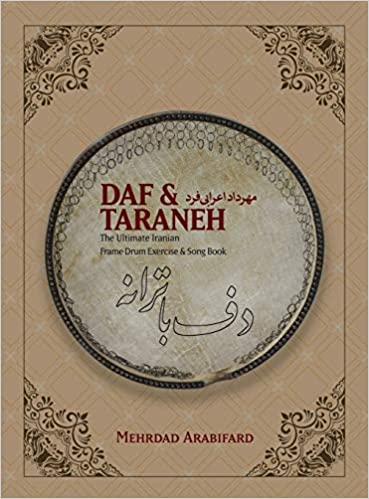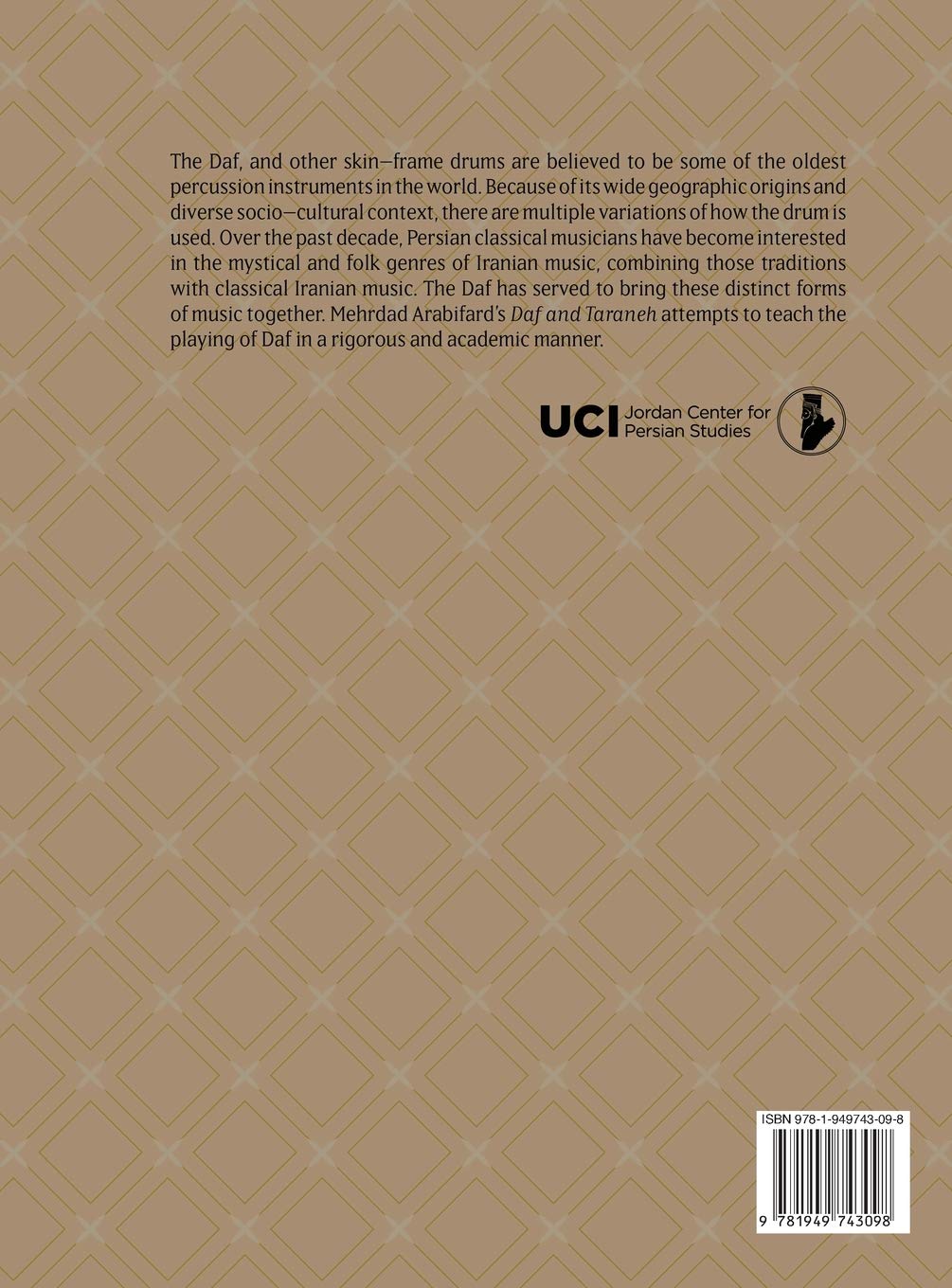
Daf and Taraneh
The Ultimate Iranian Frame Drum Exercise & Song Book
The Ultimate Iranian Frame Drum Exercise & Song Book


Over the past decade, Persian classical musicians have become interested in the mystical and folk genres of Iranian music, combining those traditions with classical Iranian music. The Daf has served to bring these distinct forms of music together. As such, the spiritual, cultural and ethnic qualities found in those non-classical traditions became authentically integrated into classical styles of performance. This development also explains the Daf's more recent popularity among classical Iranian musicians. Additionally, we know from photographs taken throughout the Qajar Dynasty that techniques and use during that time period also reflect different musical contexts, such as for entertainment purposes in the royal courts.
Unfortunately, even though the Daf has become very popular, there is a lack of solid resources and materials for students to learn to play it properly. Hence, my goal and motivation in producing these lessons has been to introduce methods that combine my 34 years of experience. The following lessons are a compilation of all the notations I have written for my students over the past decades. It is not uncommon to pass along Daf instruction either through oral tradition from the heart, or by charting out lessons in Western notation. My personal experience has proven that both approaches bring a more comprehensive and holistic way to learning this instrument.
During my years of teaching, I have often deliberated about how to transmit the passion and musicality of the Daf while teaching rhythms to students. Clearly, in the early stages of learning this instrument students will be more focused on securing the rhythms without having a deeper sense of the music. But over time, they will intuitively start to develop that musical understanding. In order to bridge that learning curve, in the early lessons I teach how to chant and play rhythm at the same time. Furthermore, I teach how to apply the integration of these melodies and rhythmic patterns to different songs.
Essentially, teaching traditional ballads along with rhythm has been a common method used going back about a hundred years. In addition, the goal of my method is to teach my students how to properly integrate the singing and playing together by using mind/body coordination, while at the same time teaching them traditional Iranian rhythmic patterns.
Publisher: Mehrdad Arabifard (November 7, 2019)
Language: English
Hardcover with 202 pages, 8.5 x 0.69 x 11 inches
ISBN-10: 1949743098
ISBN-13: 978-1949743098